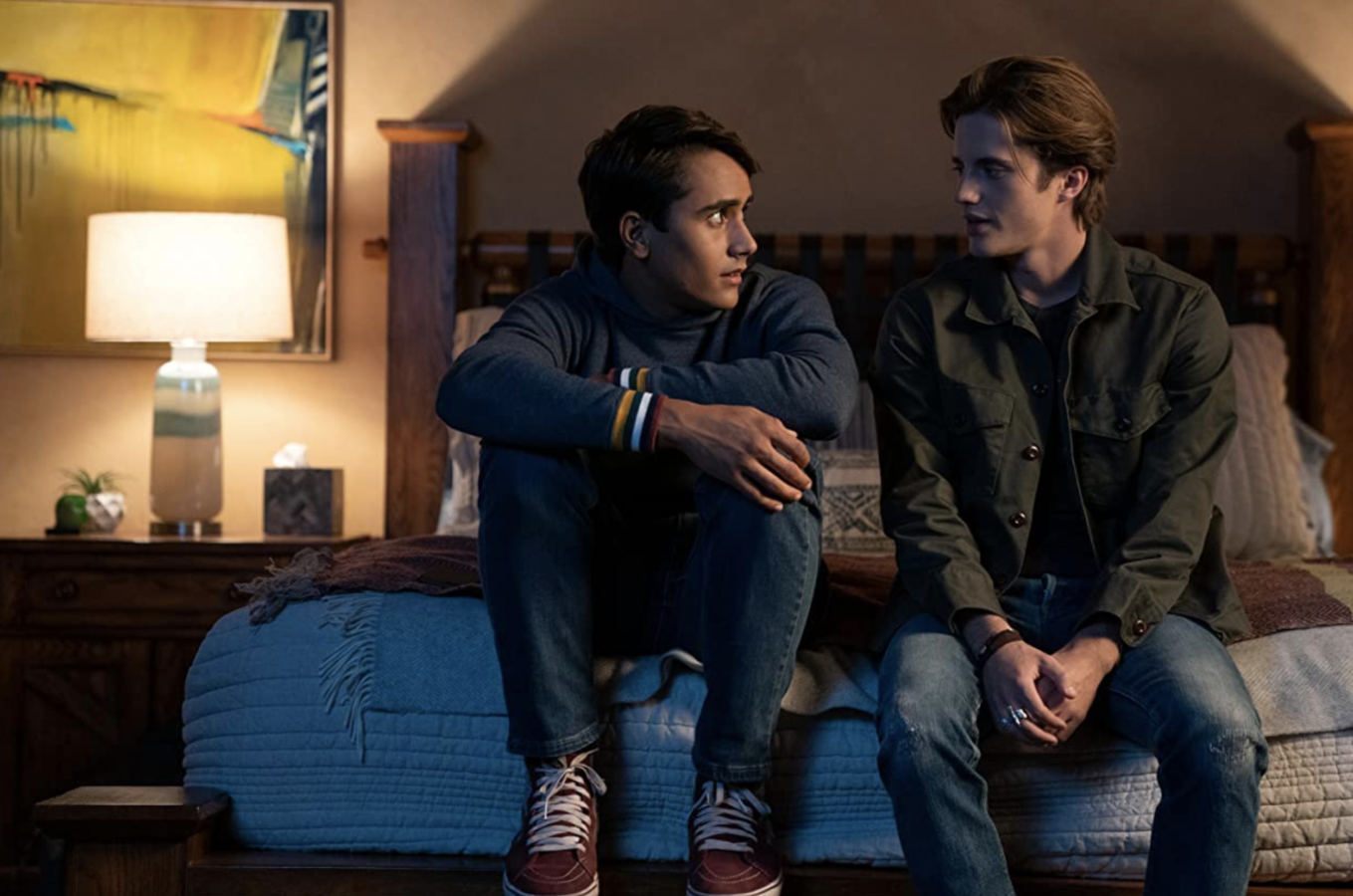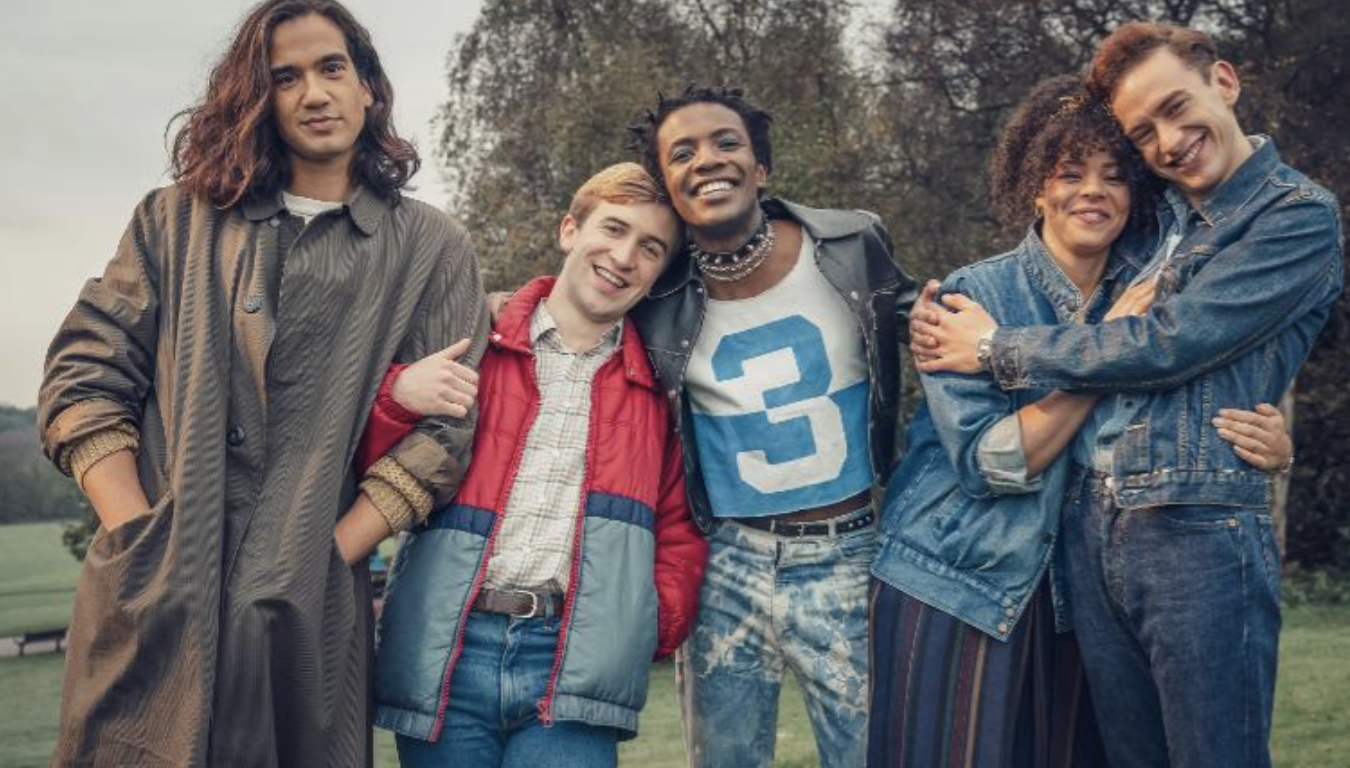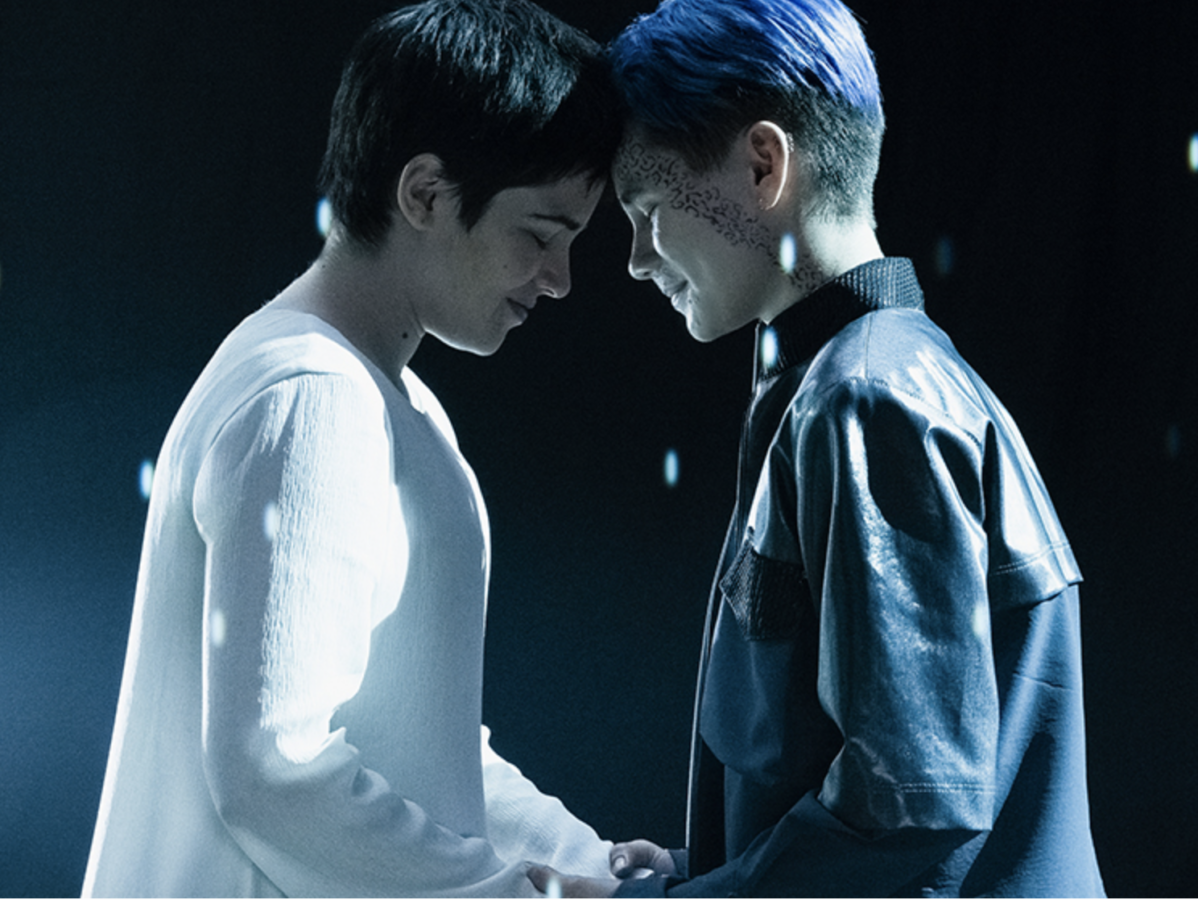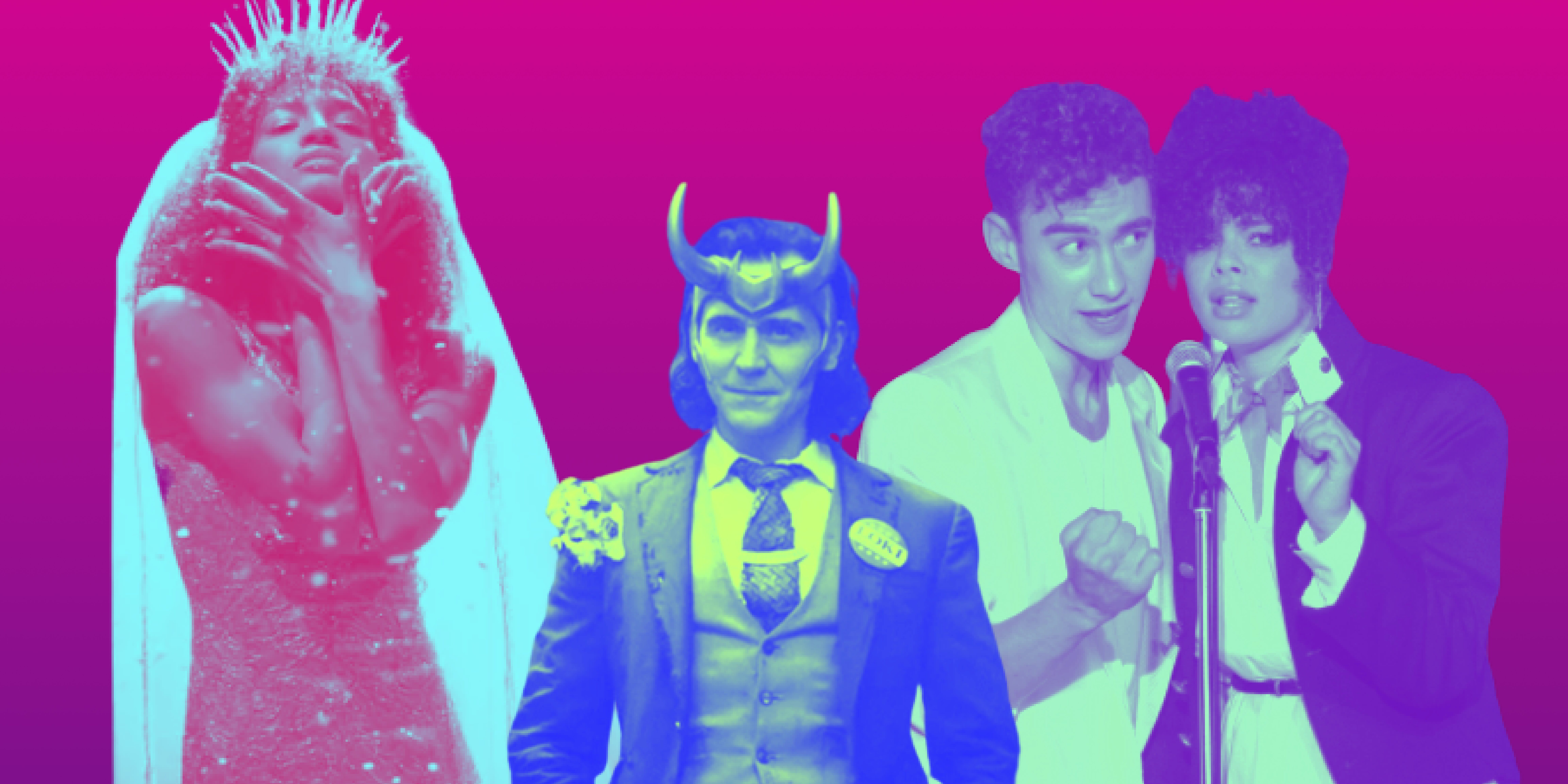Pride month might be coming to an end, but there’s always time to watch, catch-up, or discover new LGBTQ shows. This year already brought us important shows such as It’s A Sin, about love, life, and discovery in 1980s London against the backdrop of HIV/AIDS, and the final season of Pose set a new standard for how trans stories should be told in film and television.
June saw the return of many favorite shows like Love, Victor and Elite. However, this list isn’t just concerned with new shows—we’re still thinking about our favorites from the past. We’ll be updating this list throughout the year so you can be kept up-to-date with the latest LGBTQ shows that we love.
LGBTQ shows that premiered and/or returned in May/June

Love, Victor, Season 2 (Hulu)
Love, Victor, set in the world of the 2018 movie Love, Simon, focuses on Victor Salazar (Michael Cimino) as he navigates figuring out his identity as a gay, Latinx teen. Season two delves deeper into his relationships with his parents and his boyfriend Benji (George Sear). His mother Isabel (Ana Ortiz) struggles to reconcile her religious beliefs with her son’s identity while Victor’s father Armando (James Martinez) finds it easier to embrace being an ally to his son. This season explores the realities of teen love and the struggle to find acceptance from others. In the end, Victor finds that being true to who he is will always be enough. [Melissa Linares]
Lucifer, Season 5B (Netflix)
Lucifer does a great job by featuring multiple LGBTQ characters in its line-up while not making the characters’ stories exclusively about their sexuality. While Lucifer is canonically interested in multiple sexes, his story isn’t what speaks to most LGBTQ fans, but the story of Maze instead. Maze’s journey consists of finding her humanity and her place in the world and while she grows with the help of Trixie, Amenadiel, and Linda, Eve is that final piece of the puzzle that eventually pushes her to realize she has a soul. For Maze, her sexuality is just one part of the puzzle, an important idea for people of all sexualities. Accepting her love for Eve opened her eyes and allowed her to see, but it’s not all of her sight. Maze’s story is so much more than that. She teaches us that not every queer story should be one about coming out or battling external factors but accepting love that could drive us closer to the people we ought to be. [Amanda Reimer]
Loki (Disney+)
Advertisement
LGBTQ media doesn’t just defy the heteronormative perspective in terms of sexuality, but also on the basis of gender. In Loki, The character of Loki identifies as gender-fluid, or in layman’s terms, someone who’s gender fluctuates over time. Loki identifies this way in the Marvel comics but seeing this aspect of the character come to the screen may be a shock to some, especially considering Loki has been on screen for a decade. As the series pursues hunting down “variants” or slightly alternate versions of Loki, Loki could find themselves as different genders. The third episode, “Lamentis,” confirmed Loki and Sylvie (another variant of Loki) are both bisexual in a casual conversation at the end of the world. While the show probably won’t have time for relationship drama since it’s only six episodes, this blunt confirmation is still nice, especially in a universe that has repeatedly disappointed in LGBTQ representation. [Amanda Reimer]
Other shows worth checking out:
Feel Good (Season 2)
Elite (Season 4)
Advertisement
New 2021 shows currently streaming

It’s A Sin (HBO Max)
Not many shows can say they have real life examples of their impact, but this year’s It’s A Sin certainly can. When the five episode limited series premiered on Channel 4 in the U.K. (and later on HBO Max), it saw a fourfold rise in HIV tests in the U.K during HIV testing week. The show, starring Years & Years singer Olly Alexander and Lydia West (from Years and Years of a different name), was just as much about life as it was about a deadly disease. Against the backdrop of the rise of HIV/AIDS in the U.K in the 1980s, friends Ritchie (Alexander), Jill (West), Roscoe (Omari Douglas), Ash (Nathanial Curtis), and Colin (Callum Scott Howells) fall in and out of love, and try their best to navigate a world set against them. Covering a decade in just five episodes is no small task, but creator Russel T. Davies sets a chilling pace, where the highest of highs are immediately followed by the lowest of lows, but in between, there’s moments of friendship, dancing, love, and joy. [Katey Stoetzel]
Pose, final season (Netflix)
Advertisement
When people say Pose is more than a TV show, they are not wrong. Pose did what very few shows did before by centering Black and Latinx trans characters in its story. After years of LGBTQ+ stories about white and/or cisgender characters, Pose came along with all that jazz and gave us hour-long episodes full of compelling characters, entertaining spectacle, and storytelling grounded in history but also in feeling. Set in New York City during the 80s and 90s, it depicts the families that drove ball culture and the bonds forged between queer men and trans women in the community. While the series certainly has its celebratory moments, it also showed the heartbreak of the AIDS epidemic and the discrimination and violence queer and trans people of color frequently faced. Pose set a new standard for how trans stories should be told in film and television, and its legacy will be felt whenever queer and trans people of color get to tell, perform, or direct their own stories. [Gabrielle Bondi]
Cruel Summer (Freeform/Hulu)
Cruel Summer proves that LGBTQ+ representation isn’t just a box that creators need to check off to boast representation nor that setting is a barrier for providing such. Cruel Summer starts strong with exploring the relationship of two closeted high schoolers in the 90s but becomes noteworthy when it recognizes the chemistry between one of the lead girls, Kate, and the girl who ends up becoming her best friend and arguably, soulmate. This show even includes almost blatant parallels, having Kate’s boyfriend offer her a promise ring in one timeline while having the girls also exchange promise ring (pops) in a later timeline that very episode. Cruel Summer proves that there’s no reason to deny chemistry, especially that of same-sex couples, because odds are, it’s even better than what was planned.
Basically, Kallory. [Amanda Reimer]
Staff picks

Star Trek Discovery (Paramount+)
Star Trek is heralded as one of the pioneers of inclusivity (the original series aired one of the first interracial kisses on American television) and still features identities and topics that push the needle forward today. Star Trek: Discovery continues this trend by featuring not only multiple gay characters on its main cast since its first season but introduced a non-binary character and actor in its third season. While the show doesn’t do so well in Adira’s original story (bury your trans boyfriends,) Discovery spends its due time in introducing the character as well as attempting to set up a way to keep said boyfriend involved in future seasons, providing hope. Star Trek: Discovery also utilizes its lore well with Adira, putting a human in the situation of a Trill, the species which is largely a queer metaphor to begin with. [Amanda Reimer]
Shadowhunters (Hulu)
While every season of Shadowhunters teetered on the edge of apocalypses, Magnus Bane (Harry Shum Jr.) and Alec Lightwood (Matthew Daddario) held down the fort, as a warlock and shadowhunter respectively, but also as the show’s longest-standing relationship. Alec’s coming out story in season one challenged the conservative way he grew up, making a dramatic statement in episode 12, “Malec.” Shadowhunters only got 55 episodes, and the timeline of the show unfolds quickly (don’t look too close at it), but Magnus and Alec’s relationship is cared for deeply through the writing as well as the portrayals from Shum Jr. and Daddario. They might hit a few roadblocks along the way, “mundane” relationship ones as well as supernatural ones, but they always came back to each other. [Katey Stoetzel]
Advertisement







